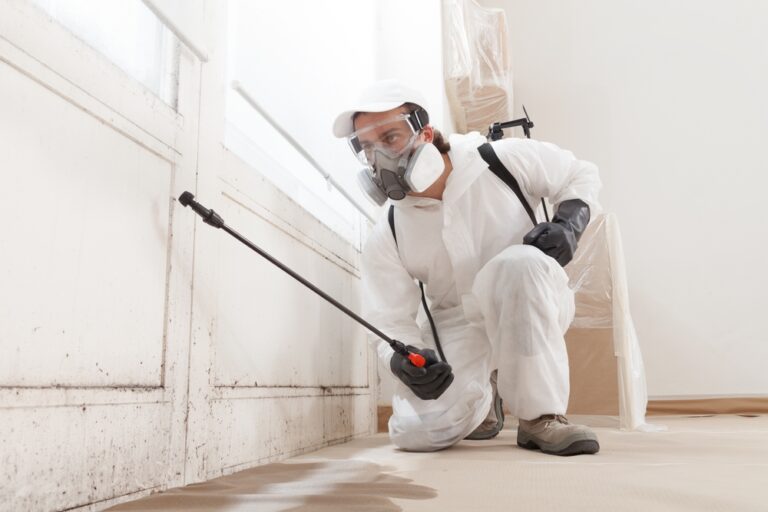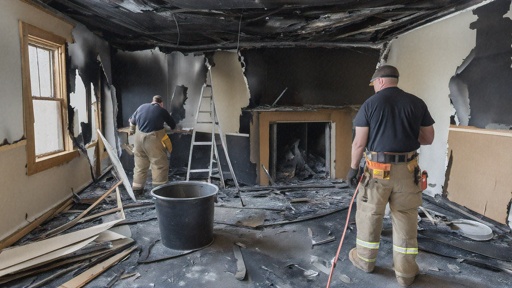Introduction
Property restoration is a critical process that property owners face when their homes or businesses suffer damage from natural disasters, such as storms, fires, or flooding. The consequences of such events can be devastating, leading not only to significant financial loss but also to emotional distress. Understanding the nuances of the restoration process is essential for mitigating damage and ensuring a swift return to normalcy. This article will provide a thorough overview of property restoration, including steps to take immediately after damage, long-term strategies, and real-life case studies to illustrate successful recovery.
Property restoration professionals are equipped with the expertise and tools necessary to address various types of damage effectively. They assess the extent of the damage and develop a comprehensive restoration plan tailored to each specific situation. Quick action is crucial in preventing further damage and minimizing the overall restoration costs. Property owners should document the damage extensively through photographs and written descriptions to support insurance claims. By entrusting the restoration process to experienced professionals, property owners can expedite the recovery process and restore their properties to pre-damage conditions efficiently.
Understanding Property Restoration
Definition of Property Restoration
Property restoration refers to the process of repairing and restoring a building to its original condition after it has sustained damage. This can involve a wide range of actions, from cleaning and sanitizing affected areas to extensive reconstruction efforts. The primary goal is to return the property to a safe and functional state, minimizing disruption to the occupants and ensuring the integrity of the structure.
Property restoration encompasses various activities aimed at repairing and renovating a building to its former state following damage. This includes thorough cleaning, sanitization, and reconstruction to ensure the property’s safety and functionality are restored. Engaging skilled professionals can streamline the restoration process, minimizing disruptions and preserving the structure’s integrity. It is crucial for property owners to maintain detailed documentation of the damage, such as photographs and written descriptions, to substantiate insurance claims effectively. Effective property restoration involves a comprehensive approach that prioritizes returning the property to pre-damage conditions efficiently and effectively.
Importance of Timely Restoration
Time is of the essence in property restoration. Prompt action can significantly reduce the extent of damage and increase the chances of a successful restoration. For instance, delaying water extraction can lead to mold growth, while postponing fire damage repairs can allow smoke odors to permeate materials further. Therefore, understanding the importance of timely restoration is crucial for property owners facing such challenges.
Delays in restoration efforts can result in further deterioration of the property and increase the overall restoration costs. The longer the damage remains unresolved, the more complex and expensive the restoration process becomes. Property owners must proactively address any damage promptly to prevent secondary issues from arising. Timely restoration not only ensures the safety of occupants but also preserves the structural integrity of the building. By acting swiftly in response to property damage, owners can mitigate risks and expedite the restoration process effectively.
Types of Property Damage
Property damage can come in various forms, including:
- Storm Damage: Often caused by high winds, flooding, hail, or tornadoes, storm damage can affect the exterior and interior of properties.
- Fire Damage: Fires can lead to extensive damage from flames, heat, and smoke, requiring specialized restoration techniques to address.
- Water Damage: Water intrusion can result from various sources, including floods, burst pipes, or leaks, leading to structural damage and mold issues.
Initial Assessment After Damage
Safety First: Ensuring a Safe Environment
Before undertaking any restoration efforts, safety should be the top priority. Property owners must assess whether it is safe to enter the premises. This includes checking for structural integrity, hazards like exposed wires, and potential gas leaks. If there are significant safety concerns, it’s advisable to wait for professionals to evaluate the situation.
Following an initial safety assessment, property owners should document the damage thoroughly for insurance purposes. Proper documentation can help streamline the claims process and ensure adequate coverage for restoration costs. Once safety is confirmed, property owners can begin addressing immediate concerns such as water extraction or temporary repairs. Engaging qualified professionals for restoration work is crucial to ensure the property is restored effectively and to code standards. Effective communication with insurance providers and restoration experts can help expedite the overall recovery process.
Documenting the Damage
Documenting the damage is vital for insurance claims and restoration planning. Take comprehensive photographs and videos of all affected areas, and make a detailed inventory of damaged items. This documentation will serve as crucial evidence when assessing your claim with insurance providers and for guiding the restoration process.
Proper documentation can help streamline the claims process and ensure adequate coverage for restoration costs. Once safety is confirmed, property owners can begin addressing immediate concerns such as water extraction or temporary repairs. Engaging qualified professionals for restoration work is crucial to ensure the property is restored effectively and to code standards. Effective communication with insurance providers and restoration experts can help expedite the overall recovery process. Documenting the damage is vital for insurance claims and restoration planning. Take comprehensive photographs and videos of all affected areas, and make a detailed inventory of damaged items. This documentation will serve as crucial evidence when assessing your claim with insurance providers and for guiding the restoration process.
Contacting Insurance Providers
Once safety is ensured and damage documented, contacting your insurance provider is the next critical step. Notify them about the incident and provide all relevant documentation. This will help expedite the claims process and ensure that you receive the financial assistance needed for restoration.
It is important to have all necessary documentation when contacting insurance providers. This includes comprehensive photographs, videos, and a detailed inventory of damaged items. Providing this information will help expedite the claims process. Notify your insurance provider about the incident promptly to kickstart the recovery process efficiently. The documentation collected will be crucial evidence for assessing your claim and guiding the restoration process.
Steps for Property Restoration
Storm Damage Restoration
1. Immediate Response
The first step in storm damage restoration is to secure the property. This may include boarding up windows, putting tarps over roofs, and removing debris to prevent further damage. Quick action minimizes the potential for theft and additional weather-related issues.
After securing the property, the next vital step is to assess the extent of the storm damage thoroughly. Engage professionals to evaluate structural integrity and identify areas needing immediate attention. Develop a detailed restoration plan outlining the steps required to return the property to its pre-damaged state. Coordinate with contractors and restoration experts to commence repairs promptly. Regularly communicate with your insurance provider to ensure all necessary documentation is submitted for efficient processing.
2. Water Removal and Drying
After securing the property, water removal is a top priority. Professional water extraction services can effectively remove standing water and moisture from the affected areas. Following extraction, using industrial-grade dehumidifiers and fans is essential to thoroughly dry all surfaces to prevent mold growth.
Once the property is fully dried, assess for any remaining moisture and ensure all surfaces are completely dry to prevent mold growth. Dispose of any damaged items properly and safely to avoid health hazards. Conduct a thorough inspection to identify any hidden water damage that may have been missed during initial assessments. Implement preventive measures to avoid future water damage and protect the property from potential risks. Document all restoration efforts and expenses for insurance claims and future reference.
3. Structural Repair and Reinforcement
Once the property is dry, structural repairs can begin. This includes repairing or replacing damaged roofing, siding, and framing. Reinforcement may also be necessary to ensure the property can withstand future storms, such as adding additional bracing or upgrading windows.
Inspect the structural integrity of the property to identify any areas needing repair or reinforcement. Address any structural damage promptly to prevent further deterioration of the property. Utilize appropriate materials and techniques to reinforce the property against future damage. Conduct a final assessment to ensure all structural repairs meet safety and building code standards. Keep detailed records of all structural repair work for future maintenance and inspection purposes.
Fire Damage Restoration
1. Assessing Fire and Smoke Damage
Fire damage restoration begins with an assessment of the property to determine the extent of the damage caused by flames and smoke. This assessment helps prioritize what needs immediate attention and what can wait.
Evaluate the level of damage caused by fire and smoke to prioritize restoration tasks accordingly. Perform a thorough assessment to determine the areas that require immediate attention. Address fire and smoke damage promptly to prevent further deterioration of the property. Utilize appropriate restoration techniques and materials to restore the property to its pre-damaged condition. Ensure all restoration work complies with safety and building code standards for a comprehensive recovery process.
2. Soot and Odor Removal
Removing soot and odors is crucial in fire restoration. Professional cleaning services will use specialized equipment and techniques to eliminate smoke odors and soot from walls, ceilings, and other surfaces. This may involve using ozone generators or thermal foggers to penetrate materials effectively.
3. Repairing Structural Elements
Repairing structural elements damaged by fire is essential to maintain the property’s integrity. This may involve replacing burned beams, drywall, and insulation, ensuring that the structure meets safety codes and standards.
Water Damage Restoration
1. Identifying the Source of Water
The first step in water damage restoration is identifying the source of the water intrusion. This could be due to a burst pipe, roof leak, or flooding. Addressing the source is crucial to prevent further damage.
After identifying the source of the water, professional restoration teams will work to stop the water flow and address the issue. They will then assess the extent of the water damage to determine the necessary restoration steps. This may involve extracting standing water, drying out the affected areas, and dehumidifying the space to prevent mold growth. Advanced equipment like industrial-grade dehumidifiers and air movers will be used to expedite the drying process. Once the water-damaged areas are thoroughly dried, restoration experts will repair or replace damaged materials to restore the property to its pre-damaged condition.
2. Water Extraction Techniques
Water extraction techniques vary depending on the extent of the damage. Professional restoration teams may use submersible pumps, wet/dry vacuums, and other specialized equipment to remove water effectively from the property.
3. Mold Prevention and Treatment
After water extraction, mold prevention becomes a priority. Restoration professionals will typically treat affected areas with anti-microbial solutions to inhibit mold growth. Monitoring moisture levels is also critical to ensure a safe and healthy environment.
Long-Term Strategies for Restoration
Choosing the Right Restoration Professionals
Selecting qualified restoration professionals is essential to ensure a successful recovery. Look for companies with certifications from recognized organizations such as the Institute of Inspection, Cleaning and Restoration Certification (IICRC). Checking reviews and obtaining estimates from multiple providers can also help in making an informed decision.
Understanding the Restoration Process
Property owners should familiarize themselves with the restoration process to set realistic expectations. Restoration typically involves several phases: assessment, cleanup, repair, and final inspection. Each phase requires clear communication between the property owner and restoration team to ensure the project stays on track.
Post-Restoration Inspection and Maintenance
After the restoration is complete, a thorough inspection is essential to confirm that all repairs have been made to a satisfactory standard. Regular maintenance should follow to prevent future incidents, including routine inspections of plumbing, roofing, and electrical systems.
Conclusion
Property restoration after storm, fire, or water damage is a complex yet essential process that requires careful planning and execution. By understanding the types of damage, taking immediate action, and collaborating with qualified restoration professionals, property owners can navigate these challenges effectively. Ultimately, timely restoration not only preserves the integrity of the property but also provides peace of mind for those affected. Including the type and extent of damage, required materials, and labor. Obtaining multiple estimates from qualified professionals can provide a clearer picture of potential costs. Take the first step to getting the help you need by calling Apex Restoration DKI today!





